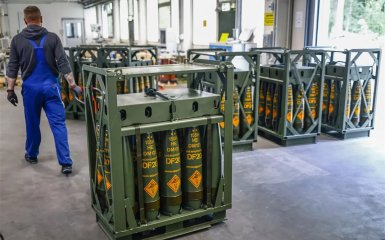The US Department of Defence opened the first munitions factory after the beginning of the large-scale invasion of the Russian occupation army in Ukraine.
What is known about the new US defence plant that will manufacture ammunition for Ukraine
At the plant located near Dallas, Texas, workers from Turkey are already unpacking wooden boxes bearing the emblem of the defence company Repkon, which is based in Istanbul.
Currently, the assembly of robotic equipment and machines for the further production of artillery ammunition is underway.
It is emphasised that the enterprise will soon produce about 30,000 steel rounds for 155 mm howitzers every month.
NATO Secretary General Jens Stoltenberg noted that in 2023, the Ukrainian military produced 4,000 to 7,000 such munitions per day before the US Congress stopped approving military aid to Ukraine.
Because of this, the Ukrainian military still experiences an acute shortage of ammunition at the front.
The US Ministry of Defense, seeking to provide the Ukrainian military with sufficient ammunition, planned to increase its production to 100,000 per month by the end of 2025.
The factories in Scranton and Wilkes-Barre, Pennsylvania, together produce about 36,000 shells per month.
General Dynamics' new facility in Mesquite, Texas, will produce 30,000 units when fully operational.
Continued growth in the production of artillery ammunition is important for the long-term needs of the United States and Ukraine. But even at best, I'd say those late 2025 performance targets will be met late in this war, and it's likely that Russian artillery power will still be higher than that of the US and Europe combined at that point. Let's say that in a year and a half, both the United States and Europe will produce or buy more than a million shells each. This is still probably less than Russia is going to produce this year, warned Michael Kofman, an expert on the Russian army and a senior fellow at the Carnegie Endowment.
The plant will consist of three production lines in different buildings, one of which will house a Frito-Lay distribution center.
How will the new munitions production enterprises in the USA work
Shells can take several days to make at today's military factories in Pennsylvania, which use a combination of new and almost age-old technology to heat and press steel blanks into conical shells.
But the new plant in Mesquite is much faster.
The shorter revolution is achieved through so-called flow forming—a machine inside a body roughly the size of a city bus spins a 130-pound steel cup at high speed while compressing it until it's a long, shiny cylinder.
After that, robots do most of the remaining work.
Laser scanners have replaced human eyes and hand tools for inspecting projectiles internally and externally, quickly verifying that projectiles meet desired specifications.
Once production is complete, the empty shells made in Mesquite will be sent to the Army's only facility to fill them with explosives, a World War II-era plant in Burlington, Iowa.
However, many of the shells will be shipped to another new General Dynamics plant under construction in Camden, Arkansas, next year.
According to two officials, the United States has given Kyiv secret plans for the production of more than 1,000 units of American weapons and translated the same number of technical manuals from English into Ukrainian.




